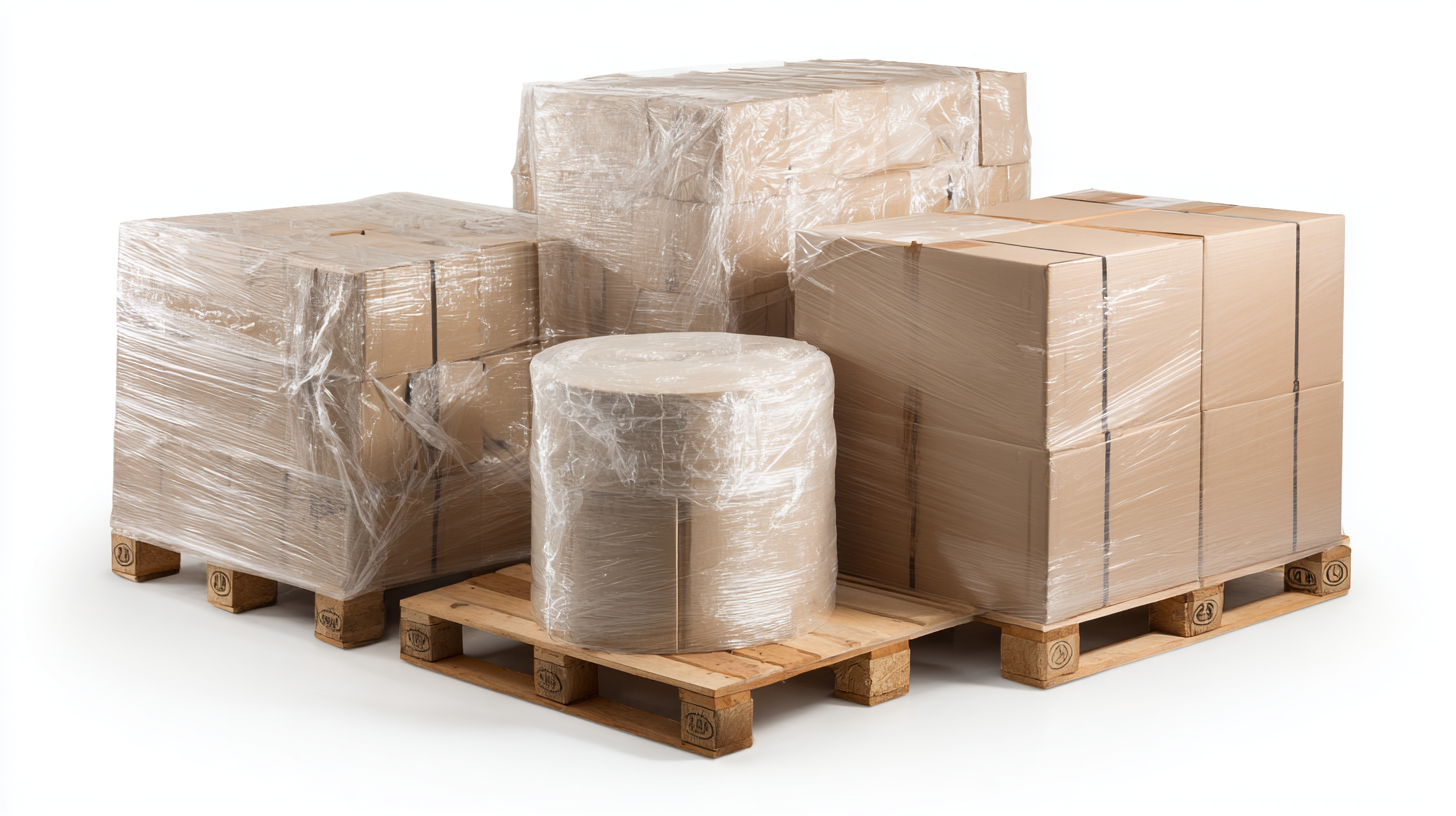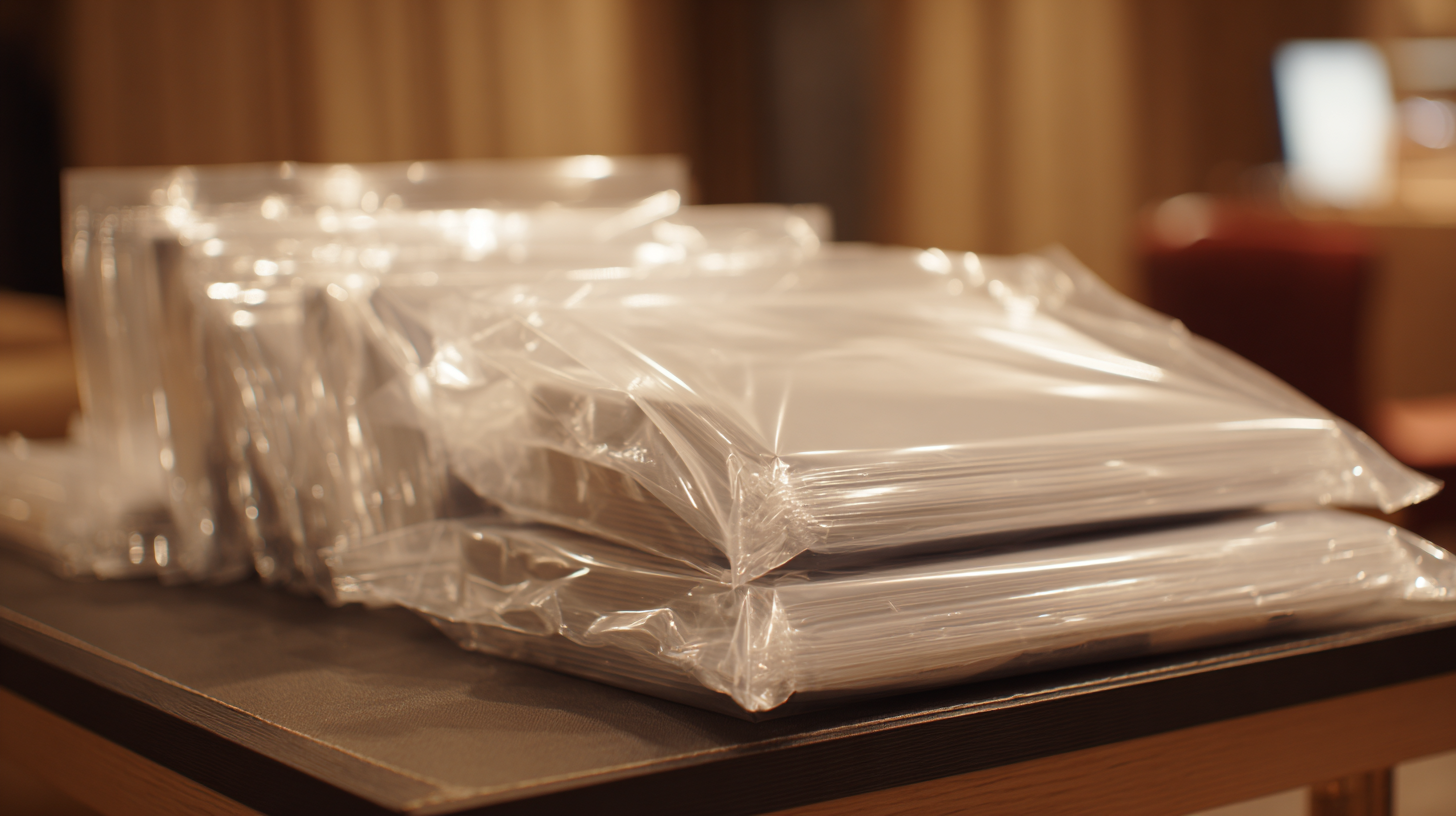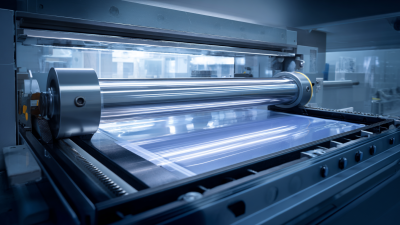BLOG
Exploring the Benefits of Shrink Wrap Packaging for Sustainable Business Practices
 Shrink wrap packaging has emerged as a crucial element in the pursuit of sustainable business practices, offering a range of environmental and economic benefits. According to a report by Smithers Pira, the global market for flexible packaging, which includes shrink wrap, is expected to reach $300 billion by 2024, driven by the increasing demand for eco-friendly packaging solutions. This innovative packaging method not only reduces material waste by utilizing less plastic than traditional packaging options but also ensures product protection and extends shelf life, thereby minimizing food waste.
Shrink wrap packaging has emerged as a crucial element in the pursuit of sustainable business practices, offering a range of environmental and economic benefits. According to a report by Smithers Pira, the global market for flexible packaging, which includes shrink wrap, is expected to reach $300 billion by 2024, driven by the increasing demand for eco-friendly packaging solutions. This innovative packaging method not only reduces material waste by utilizing less plastic than traditional packaging options but also ensures product protection and extends shelf life, thereby minimizing food waste.
Furthermore, a study conducted by the Packaging Association indicates that 57% of consumers prefer brands that prioritize sustainable packaging, highlighting the potential for companies to enhance their brand loyalty and market competitiveness through shrink wrap packaging. As businesses navigate the evolving landscape of consumer preferences and regulatory requirements, adopting shrink wrap packaging can be a strategic move towards achieving both sustainability goals and operational efficiency.
Understanding Shrink Wrap Packaging: An Overview of Its Eco-Friendly Features
Shrink wrap packaging has emerged as a vital component in promoting sustainable business practices, particularly due to its eco-friendly features. As the global shrink packaging market is projected to grow from approximately USD 11.73 billion in 2024 to around USD 21.55 billion by 2034, the demand for environmentally responsible packaging solutions is evident. This growth reflects a broader trend within the packaging industry, where businesses are increasingly recognizing the need to reduce their environmental footprint while maintaining product integrity and consumer satisfaction.
One of the significant eco-friendly attributes of shrink wrap is its ability to minimize material waste. Unlike traditional packaging methods, which often rely on bulky designs, shrink wrap utilizes heat to create a snug fit around products, thereby significantly reducing excess material usage. Additionally, some shrink wraps are composed of recyclable and biodegradable materials, aligning with consumer preferences for sustainable packaging. The biodegradable paper and plastic packaging market, for instance, is anticipated to grow from USD 15.43 billion in 2024 to exceed USD 40.75 billion by 2034, showcasing a shift towards more sustainable options across the industry. This transition is critical as it helps mitigate the environmental challenges faced by the packaging sector, especially in reducing reliance on single-use plastics.

Evaluating the Economic Advantages of Shrink Wrap for Sustainable Business Practices
Shrink wrap packaging has emerged as a vital component in promoting sustainable business practices while providing significant economic advantages. According to a report by Freedonia Group, the global demand for flexible packaging, including shrink wrap, is projected to reach $290 billion by 2025, showcasing its growing prevalence across various industries. This shift towards flexible solutions not only meets consumer demand for eco-friendly options but also enhances operational efficiency, with shrink wrap reducing material waste by up to 30% compared to traditional packaging methods.
Moreover, the cost-effectiveness of shrink wrap packaging is supported by its lightweight and efficient design. The Packaging Association reports that using shrink wrap can lower shipping costs by nearly 15% due to its reduced weight and compactness. This can significantly benefit companies looking to improve their bottom line while adhering to sustainability goals. Additionally, shrink wrap is recyclable and often made from polyolefin materials that generate less environmental impact, allowing businesses to align economic benefits with their commitment to greener practices.
Exploring the Benefits of Shrink Wrap Packaging for Sustainable Business Practices
| Dimension | Description | Economic Advantage | Sustainability Benefit |
|---|---|---|---|
| Material Efficiency | Use of thinner materials that provide the same protection | Reduced material costs | Less waste produced during manufacturing |
| Transportation Savings | Lightweight packaging reduces shipping costs | Lower freight expenses | Decreased carbon footprint from transportation |
| Product Protection | Enhanced barrier properties against moisture and contaminants | Reduced product loss and spoilage | Minimized need for secondary packaging |
| Recyclability | Many shrink wraps can be made from recyclable materials | Cost savings from using recyclable materials | Support for circular economy initiatives |
| Customizability | Wide range of sizes and prints available | Increased marketability and customer appeal | Promotion of brand responsibility |
Implementing Shrink Wrap Solutions: Steps for a Greener Packaging Process
Implementing shrink wrap solutions in packaging not only elevates product security but also enhances sustainability efforts. According to a report by the Sustainable Packaging Coalition, companies that adopt flexible packaging methods like shrink wrap can reduce waste by up to 30% compared to traditional rigid packaging. This reduction is primarily due to the efficient use of materials and the ability to use lighter-weight films that require less energy to produce and transport.
When considering the transition to shrink wrap packaging, it’s essential to adhere to specific steps to ensure a greener process. Start by selecting biodegradable or recycled shrink films that meet your product's requirements. Conduct a life cycle assessment to understand how your packaging impacts the environment at every stage. Additionally, invest in machinery that optimizes shrink wrapping efficiency, as it minimizes energy consumption during production.
**Tips:** Always seek suppliers who prioritize sustainability and offer certifications for their materials. Engage your team in ongoing training about the importance of eco-friendly practices in packaging. Regularly review your shrink wrap processes to identify areas for improvement and stay updated with new sustainable technologies in the packaging industry.

Comparing Shrink Wrap with Traditional Packaging: A Sustainability Assessment
Shrink wrap packaging has gained significant attention in recent years, particularly when assessed against traditional packaging methods. One of the primary benefits of shrink wrap is its lightweight nature, which drastically reduces transportation costs and carbon emissions when compared to heavier alternatives such as cardboard or plastic containers. In addition, shrink wrap provides a tight seal that helps protect products from moisture, dust, and contamination, thereby minimizing waste due to damaged goods.
When evaluating sustainability, shrink wrap also offers environmental advantages over traditional packaging. Many shrink wrap materials are recyclable and can be produced from renewable resources, thereby reducing reliance on fossil fuels. Furthermore, the efficient use of materials leads to less waste generated during the production process. In contrast, traditional packaging often involves more resources and space, resulting in a larger carbon footprint. As businesses increasingly focus on sustainable practices, shrink wrap proves to be a viable alternative that aligns with eco-friendly goals while enhancing product protection and minimizing environmental impact.
Exploring the Benefits of Shrink Wrap Packaging for Sustainable Business Practices
Innovative Technologies in Shrink Wrap: Enhancing Efficiency and Reducing Waste
Shrink wrap packaging has emerged as a pivotal innovation in enhancing the efficiency and sustainability of business practices. By employing advanced technologies like augmented reality (AR) and mixed reality (MR), companies can streamline their operations, thus minimizing waste and reducing their environmental footprint. For instance, the integration of Internet of Things (IoT) sensors allows manufacturers to monitor packaging processes in real-time, ensuring that resources are utilized effectively and waste is kept to a minimum. This shift not only contributes to sustainability but also enhances operational efficiency.
Tips: Consider incorporating smart packaging solutions to track material usage and optimize resource allocation. Regular audits of your packaging processes can identify areas ripe for innovation, leading to improved sustainability and cost savings.
Furthermore, the development of sustainable materials, such as the newly expanded commercial use of environmentally friendly pallet wraps, aligns with the growing demand for eco-conscious packaging solutions across industries. As businesses adopt these innovative technologies, they are not only responding to consumer preferences but are also paving the way for a circular economy, wherein products are designed to be reused or recycled, thus contributing to a more sustainable future.
Tips: Engage with suppliers who prioritize eco-friendly materials and sustainable manufacturing practices. Staying updated on emerging technologies in packaging can help align your business strategies with market trends, positioning you as a leader in sustainability.



